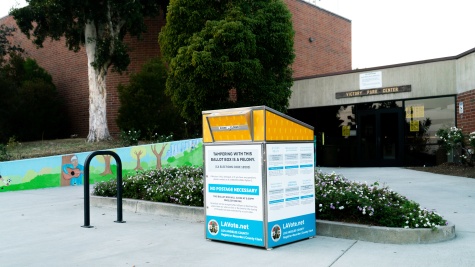Election Accuracy and Efficiency
State GIOs hold the key to GIS implementation
Does America’s electoral system know where each voter resides?
By and large, yes. But not nearly well enough to place every single one of them into the correct voting district and avoid election errors altogether. Each election season seems to reap a new crop of news stories about voters who were given the wrong ballot, or even candidates who do not, in fact, live within the boundaries of the districts they were running for. Costly do-overs, and often legal battles, follow.
There’s a technology solution to this problem, of course, and it’s the same technology many of us use to locate a new restaurant or coffee shop: GIS data to mark voters’ locations, as well as the borders of each voting district. In fact, many states already use GIS for other official matters, like zoning and emergency response systems; they even have geographic information officers (GIOs) on staff. Even so, a large number of states haven’t geo-enabled their elections. Yet.
It was this insight that inspired National States Geographic Information Council’s (NSGIC’s) Geo-Enabled Elections project, currently in its second year.
Discovering our current topography
In order to help states leverage GIS to boost the accuracy and efficiency of their electoral systems, we needed to first understand how far states had come, and what — if any — the barriers to GIS implementation were. Next, we set out to develop resources and best practices to assist states and other election authorities ready to make the change.
In 2018 and early 2019, the Geo-Enabled Elections project surveyed state GIOs and election directors, with some interesting findings. Overall, according to the Election Director report, which surveyed more than 40% of the nation’s election directors, states hadn’t yet come very far. But the survey also uncovered a real thirst for additional progress in this area, and the project has helped to foster closer collaboration between election directors and GIOs.
Simultaneously, NSGIC deployed a team of experts with first-hand experience implementing GIS in elections across a number of states to develop a draft set of best practices. These are now available for any election authority wishing to harness the power of GIS in elections.
To further refine those best practices, the Geo-Enabled Elections project is currently collaborating with 10 states to complete a series of case studies and pilot projects, running through July 2019. Early findings point to one of the key challenges being obtaining accurate GIS data for where exactly voters are located. (There’s more discussion of this from officials in Wisconsin discuss in this case study.) Also, the decentralized nature of elections management — and the great variety in how well different counties are resourced — means that large collaborative efforts with prominent sponsors and a solid educational component may be necessary to implement GIS in elections, as highlighted in this Utah case study.
In the five pilot projects running from May through July, states from Nebraska to Pennsylvania are working to advance the use of GIS in their electoral systems. As each state differs in their level of progress towards geo-enabled elections, tasks identified for the project range widely, including:
- establishing a geographic information advisory council subcommittee
- inventorying what voting districts statewide are available as GIS shapefiles
- identifying data standards needed to maintain a statewide data layer for voting precincts
- obtaining address points from Next Generation 9–1–1
The final output of the first phase of the Geo-Enabled Elections project, scheduled for September, is a refined version of the best practices for implementing GIS in elections, which states and other election authorities can use as they work to enhance the accuracy and efficiency of their electoral processes with GIS.
Where to from here?
What’s next, and what is the impetus that will propel geo-enabled elections forward? If the case studies we already have from Utah and Wisconsin are anything to go by, we should expect a spike in interest in implementing GIS in elections as the 2020 Census draws near. The redistricting efforts that will follow will likely see many states concluding that the process would be much easier if voters were represented by pinpoints on a map, and new voting districts were also digital shapefiles — and if the two were digitally compared, such that voters would be automatically assigned to their district or districts. (The alternative, older method, instead involved translating each new district into an “address range list,” which is then compared to voter addresses in a database, with each address being numerically assigned to a district. This process is much more prone to human error, in particular in the form of addresses ranges being misstated, or entire streets being overlooked.)
Anticipating this next wave of interest, NSGIC has begun identifying additional states interested in participating in a phase two pilot study. In the meantime, anyone interested in following the Geo-Enabled Elections project and being notified when new findings or best practices become available is encouraged to sign up on elections.nsgic.org. The project team can be contacted via NSGIC Geospatial Programs Manager.


